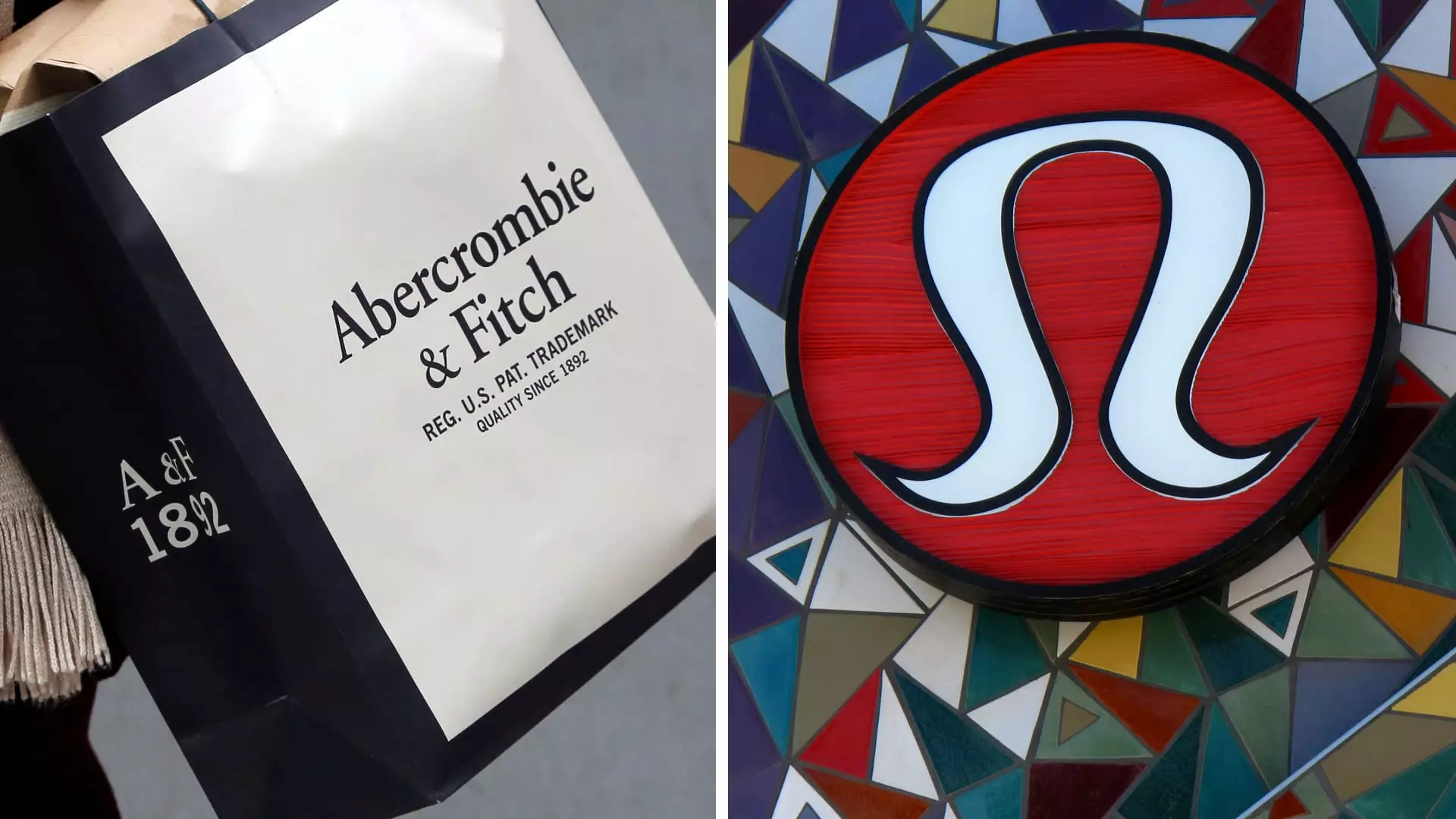The holiday shopping season is a critical period for retailers, marking a time when consumer spending surges due to promotions and festive shopping. Early reports emerging from major U.S. retailers present a paradoxical scenario: while several large chains surpassed their sales expectations, their stock performances suffered, leaving investors skeptical. This article delves into the latest reports from significant retail players such as Lululemon, Abercrombie & Fitch, American Eagle, Urban Outfitters, and Macy’s, assessing the implications for their future performance and stock market sentiments.
On the surface, many leading retailers reported unexpectedly strong sales during this crucial holiday season. Lululemon, for instance, increased its sales projections for the fourth quarter, anticipating revenue growth between 11% and 12%. Similarly, Abercrombie & Fitch, not to be outdone, amended its sales growth outlook upward, expecting between 7% and 8% growth instead of the previously projected 5% to 7%. Despite these optimistic forecasts, the reaction from the stock market was largely negative, with many companies’ shares experiencing declines— Abercrombie’s shares even plummeting by nearly 20%.
This dissonance between solid sales figures and tumbling stock prices can be attributed to several factors. First, investor expectations may have been set incredibly high due to the industry’s performance in previous years, especially during the pandemic recovery phase. Second, with a saturated market and tough competition, even a slight dip in growth rates can trigger investor unease. This uncertainty is particularly evident in Abercrombie & Fitch, where after two years of remarkable growth, observers began to speculate whether the company had reached its peak.
Lululemon’s decision to elevate its earnings per share forecast reflects a confident stance. The company now anticipates earnings between $5.81 and $5.85 per share, which is higher than previous estimates. This optimistic sentiment is underscored by strong customer reception to its product offerings during the holiday season, leading executives to emphasize growth in gross margins—a positive indicator for profitability.
However, caveats exist within Lululemon’s projections as well. The company also noted anticipated sales adjustments for the upcoming fiscal year and should be observed closely for actual performance against these targets. This highlights a critical aspect of the retail landscape in 2023: while sales may increase, margins and earnings must also align for sustained financial health. Lululemon’s efforts to innovate and adapt to consumer preferences and shifting market dynamics will be crucial as the company navigates an increasingly competitive environment.
Abercrombie & Fitch’s leadership is invoking a strategic pivot from aggressive sales growth to enhancing profitability. CEO Fran Horowitz acknowledged a potential slowdown in growth, which can be anticipated as the brand matures and faces tougher comparisons from the previous fiscal year. The company is focusing on driving sustainable, profitable growth by utilizing its robust operational capabilities and capitalizing on its strong brand recognition.
Critically, the movement towards prioritizing profits over top-line revenue can be perceived as a pragmatic response to market conditions. However, it also invites scrutiny from investors who may expect continued growth just as they had seen post-pandemic. The duality of needing to satisfy shareholder expectations while also transitioning to a more sustainable growth model will impose significant challenges on Abercrombie in the near future.
Conversely, Macy’s has not fared as well as its competitors. The department store chain forecasted that its sales would likely fall within or slightly below its earlier estimates, reflecting broader industry struggles. This underperformance, which resulted in a notable decrease in share value, signals increased competitive pressure within the retail sector, particularly against brands that are adapting and evolving quickly to meet consumer demand.
Additionally, as economic conditions fluctuate and inflation remains a concern, consumers may become increasingly selective about their spending. Macy’s difficulties underscore a significant reality: even longstanding players in the retail market must continually innovate or risk losing market share.
Overall, the early holiday retail season indicates a complex landscape—one characterized by fluctuating consumer preferences and financial scrutiny. While major brands showcased record sales, external market dynamics and stringent investor expectations tempered enthusiasm. As we move deeper into 2023, observing how these retailers adjust their strategies in response to economic pressures and investor sentiment will be essential for gauging their long-term success.
Moreover, the prospects of fluctuating consumer behavior will shape the retail landscape continually. Brands that diversify their offerings, embrace digital transformations, and focus on sustainability may ultimately find a way to thrive despite market uncertainties. Ultimately, the ongoing evolution of the retail market calls for a closer analysis as companies adapt to the nuances of consumer demand and strive for sustainable growth.


Leave a Reply